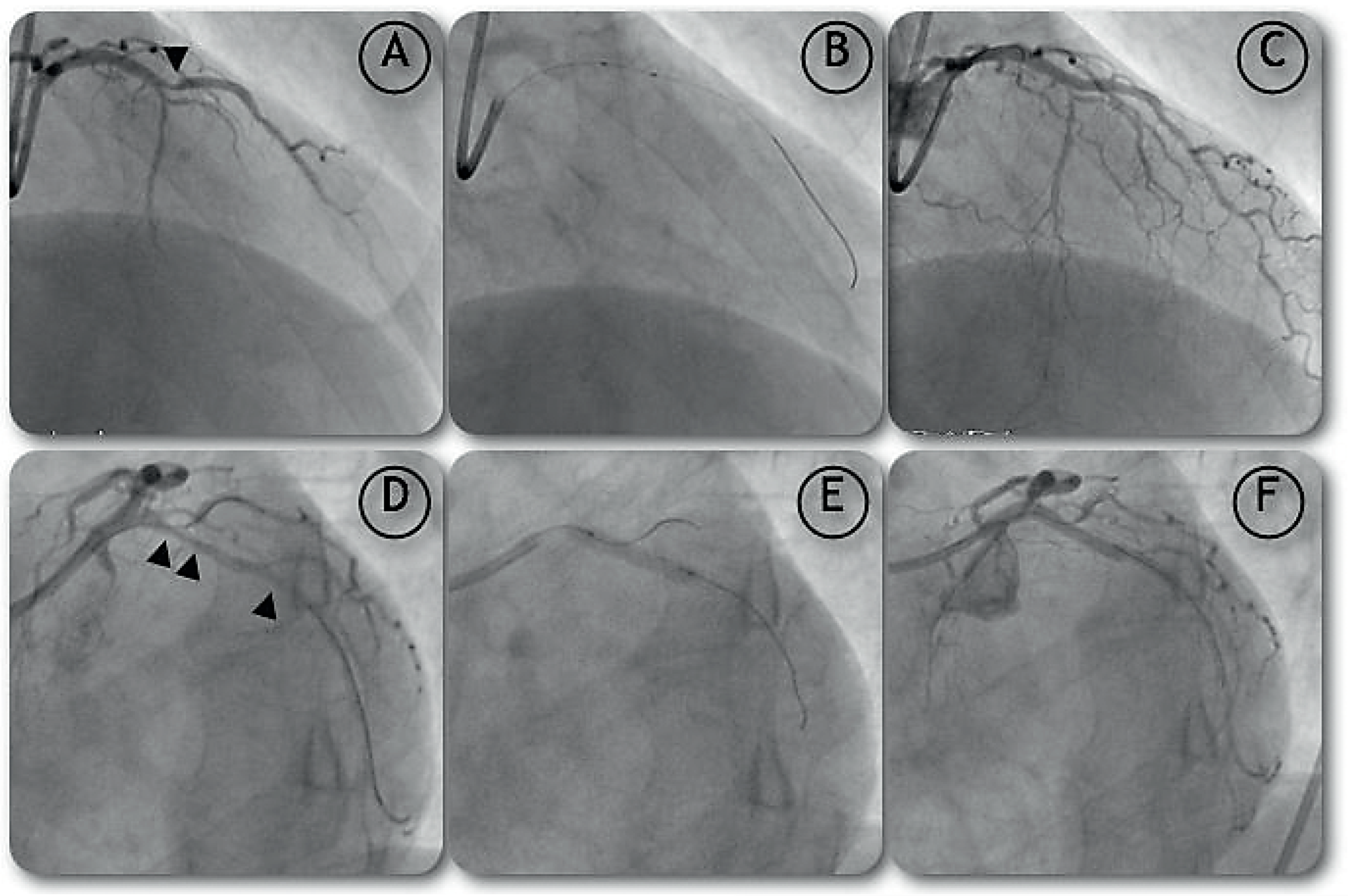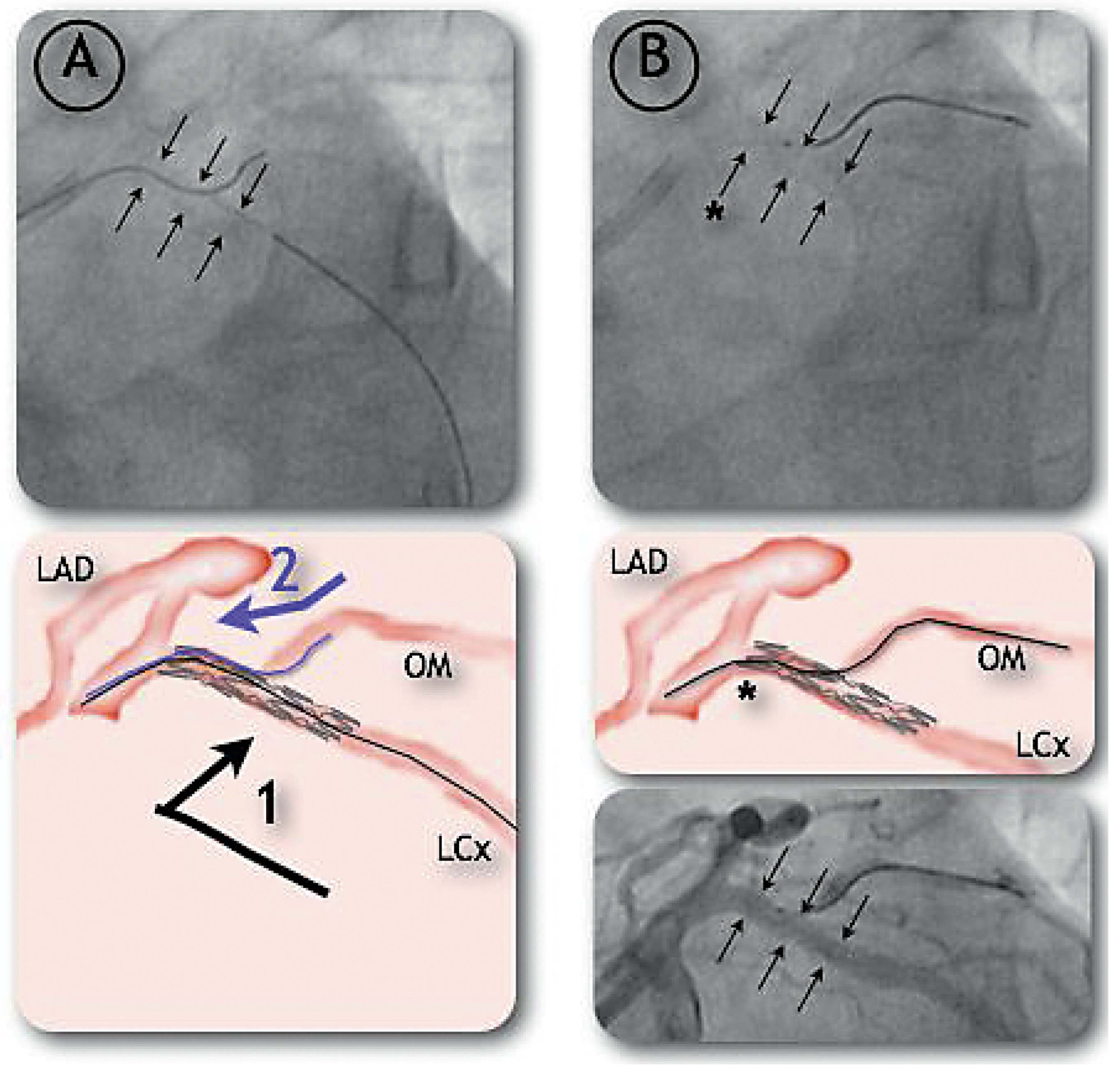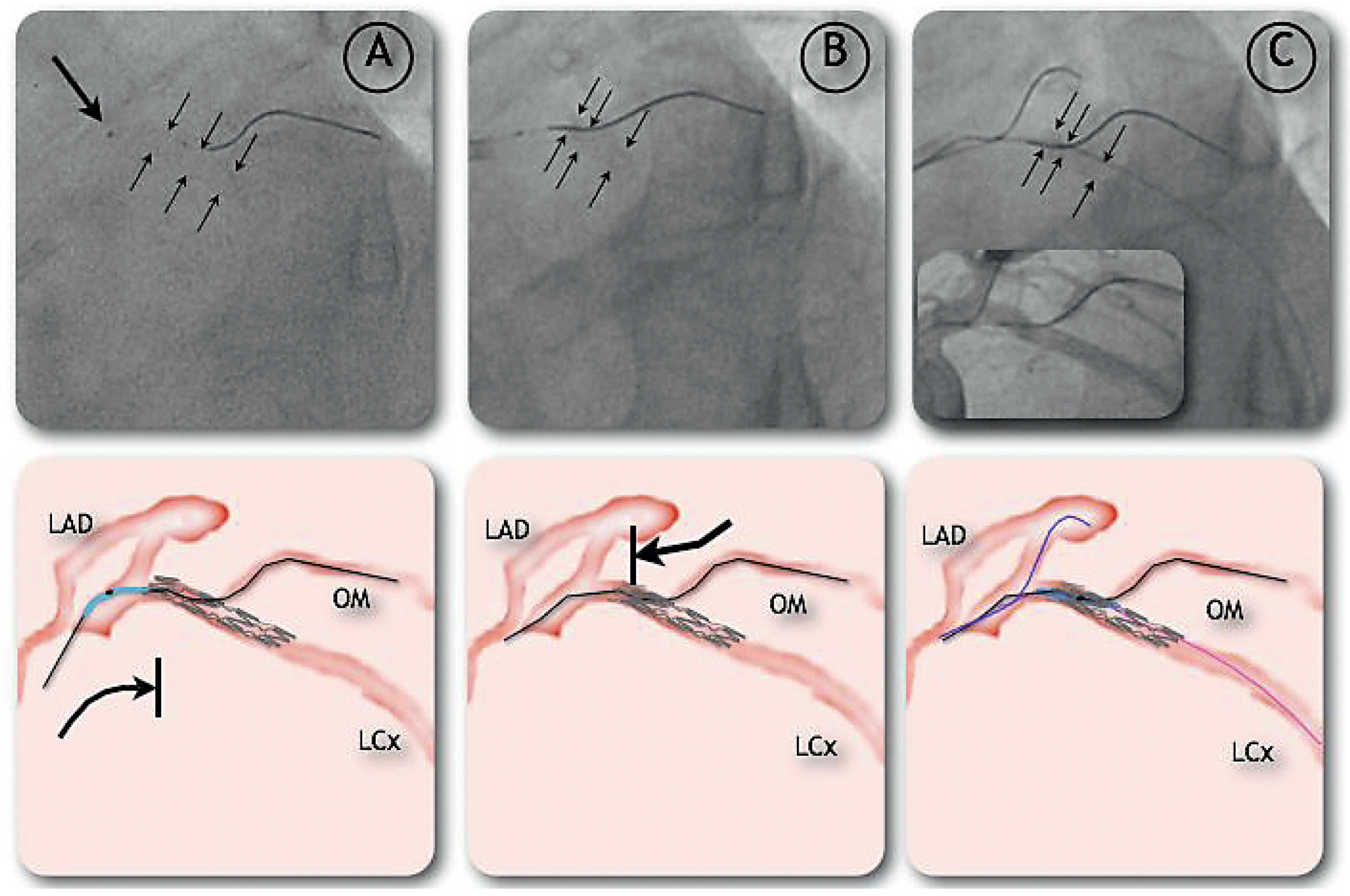Jailbreak of a Guide Wire Imprisoned by One Underexpanded Coronary Stent: The Serendipitous Crushing Technique
Summary
Case report
Discussion
Conflicts of Interest
References
- Baeriswyl, B.; Adorjan, P.; Cook, S. Caught up, then pushed down: the tribulations of one underexpanded coronary stent. Kardiovaskuläre Medizin. 2007, 10, 366–369. [Google Scholar]
- Eggebrecht, H.; Haude, M.; von Birgelen, C.; Oldenburg, O.; Baumgart, D.; Herrmann, J.; et al. Non surgical retrieval of embolized coronary stent. Catheter Cardiovasc Interv. 2000, 51, 432–440. [Google Scholar] [PubMed]
- Brilakis, E.S.; Best, P.J.; Elesber, A.A.; Barsness, G.W.; Lennon, R.J.; Holmes, D.R., Jr.; et al. Incidence, retrieval methods, and outcomes of stent loss during percutaneous coronary intervention: a large single-center experience. Catheter Cardiovasc Interv. 2005, 66, 333–340. [Google Scholar] [CrossRef] [PubMed]




© 2009 by the author. Attribution - Non-Commercial - NoDerivatives 4.0.
Share and Cite
Bouatou, Y.; Cook, S. Jailbreak of a Guide Wire Imprisoned by One Underexpanded Coronary Stent: The Serendipitous Crushing Technique. Cardiovasc. Med. 2009, 12, 53. https://doi.org/10.4414/cvm.2009.01394
Bouatou Y, Cook S. Jailbreak of a Guide Wire Imprisoned by One Underexpanded Coronary Stent: The Serendipitous Crushing Technique. Cardiovascular Medicine. 2009; 12(2):53. https://doi.org/10.4414/cvm.2009.01394
Chicago/Turabian StyleBouatou, Yassine, and Stéphane Cook. 2009. "Jailbreak of a Guide Wire Imprisoned by One Underexpanded Coronary Stent: The Serendipitous Crushing Technique" Cardiovascular Medicine 12, no. 2: 53. https://doi.org/10.4414/cvm.2009.01394
APA StyleBouatou, Y., & Cook, S. (2009). Jailbreak of a Guide Wire Imprisoned by One Underexpanded Coronary Stent: The Serendipitous Crushing Technique. Cardiovascular Medicine, 12(2), 53. https://doi.org/10.4414/cvm.2009.01394



